Abstract
Nakamura, Hakobu (Konan University, Kobe, Japan). Acriflavine-binding capacity of Escherichia coli in relation to acriflavine sensitivity and metabolic activity. J. Bacteriol. 92:1447–1452. 1966.—Inheritance of the acriflavine resistance gene by an acriflavine-sensitive strain of Escherichia coli K-12 resulted in a reduction in the cellular accumulation of acriflavine and other basic dyes, but had no effect on the accumulation of acid dyes. In both acriflavine-resistant and -sensitive strains, the cooling of cells from 37 to 0 C increased acriflavine accumulation. This increased accumulation was released from the cells after restoration to 37 C. Acriflavine accumulation was increased by carbon shortage and by metabolic disturbance caused by potassium cyanide, arsenite, puromycin, chloramphenicol, 2-thiouracil, and 8-azaguanine. The functional relation of acrifiavine accumulation to the acriflavine concentration of the medium suggests that adsorption is involved in the accumulation.
Full text
PDF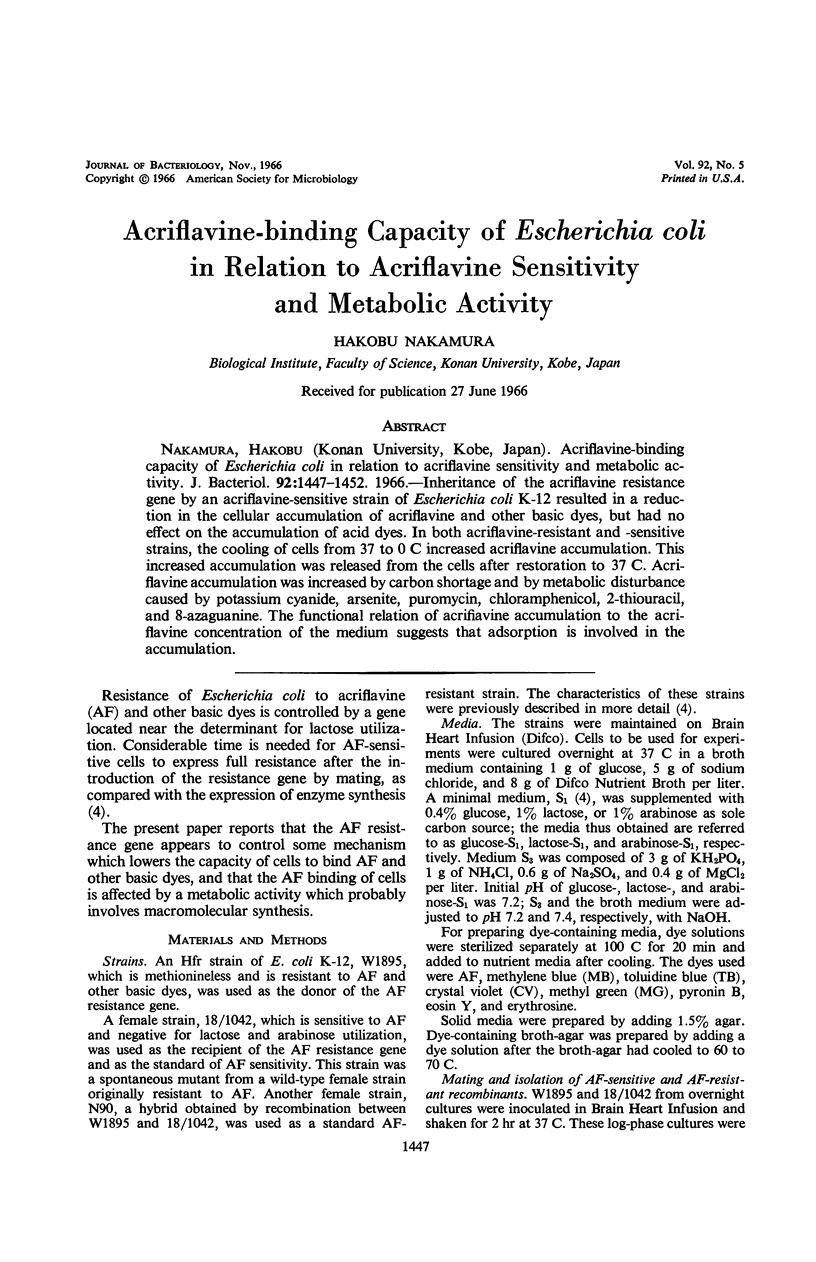
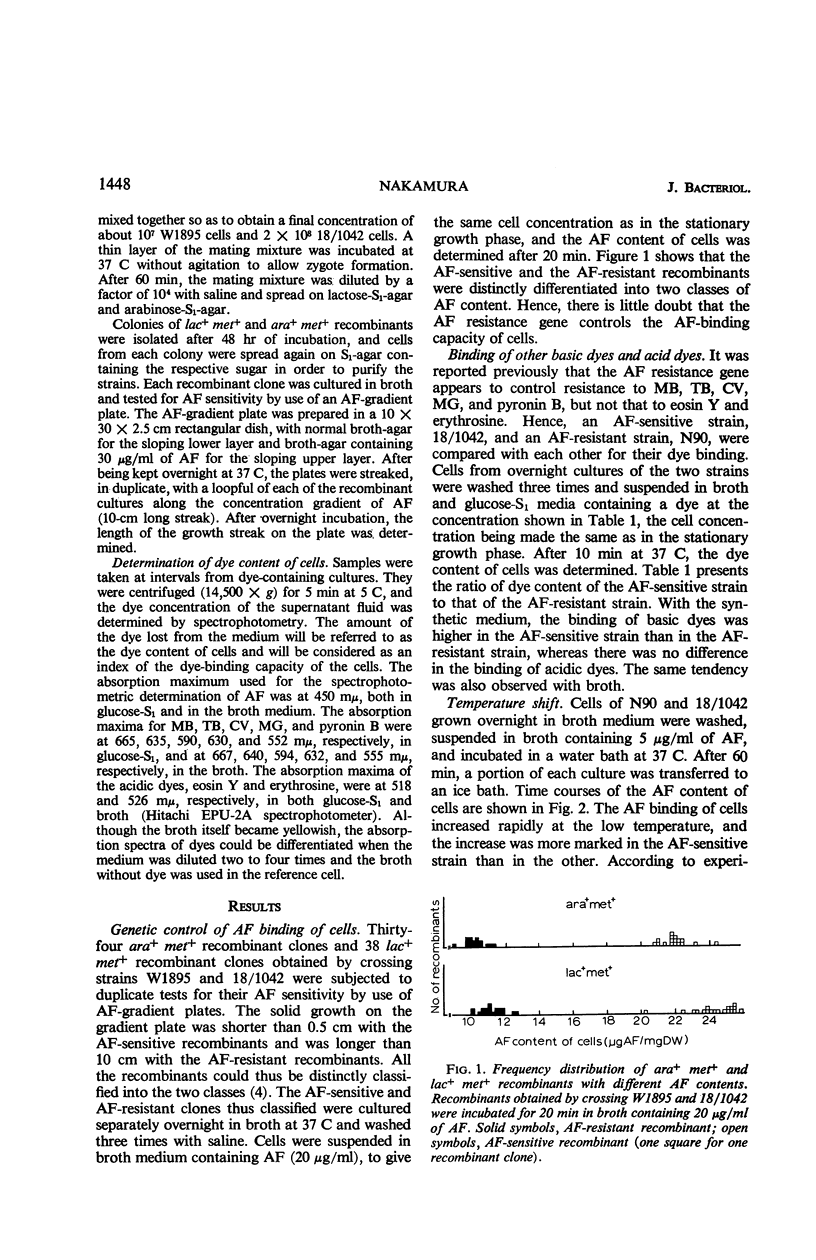

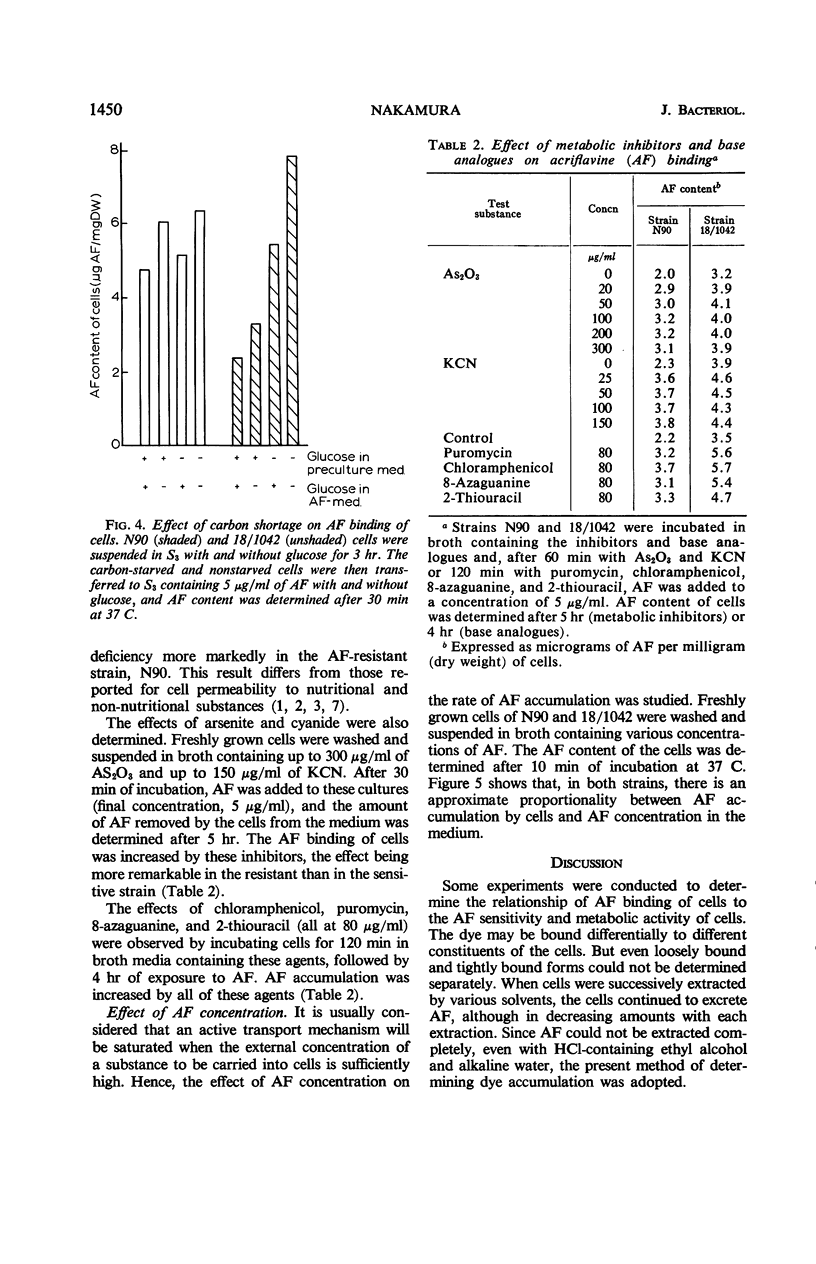
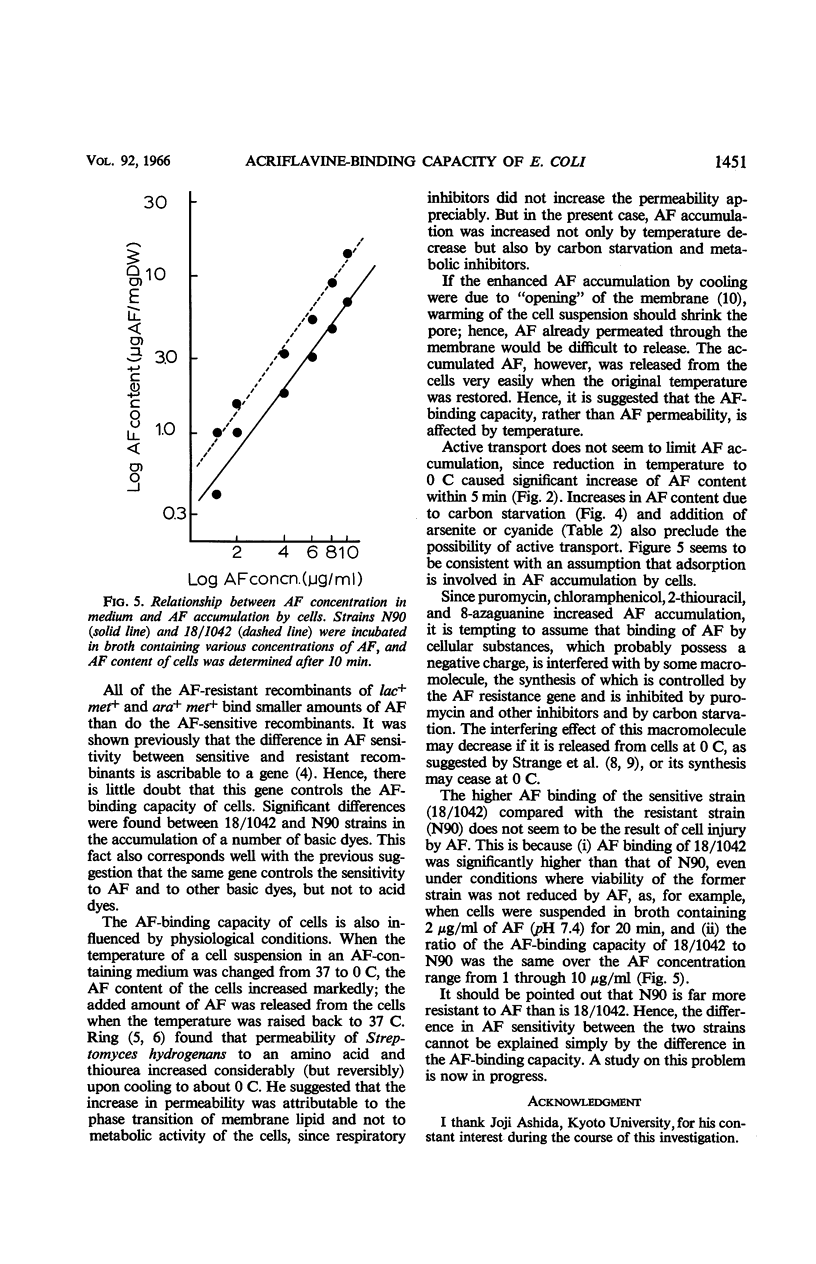
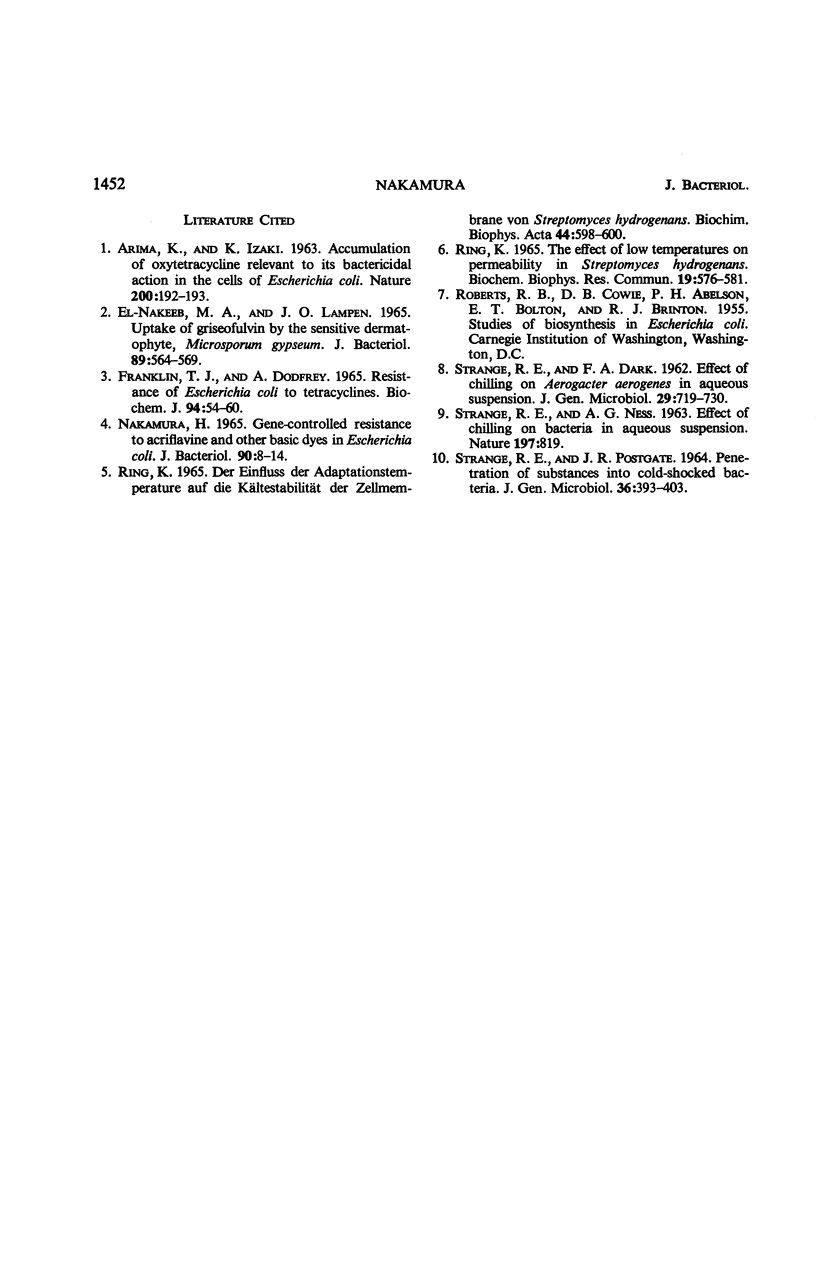
Selected References
These references are in PubMed. This may not be the complete list of references from this article.
- EL-NAKEEB M. A., LAMPEN J. O. UPTAKE OF GRISEOFULVIN BY THE SENSITIVE DERMATOPHYTE, MICROSPORUM GYPSEUM. J Bacteriol. 1965 Mar;89:564–569. doi: 10.1128/jb.89.3.564-569.1965. [DOI] [PMC free article] [PubMed] [Google Scholar]
- FRANKLIN T. J., GODFREY A. RESISTANCE OF ESCHERICHIA COLI TO TETRACYCLINES. Biochem J. 1965 Jan;94:54–60. doi: 10.1042/bj0940054. [DOI] [PMC free article] [PubMed] [Google Scholar]
- Nakamura H. Gene-Controlled Resistance to Acriflavine and Other Basic Dyes in Escherichia coli. J Bacteriol. 1965 Jul;90(1):8–14. doi: 10.1128/jb.90.1.8-14.1965. [DOI] [PMC free article] [PubMed] [Google Scholar]
- RING K. DER EINFLUSS DER ADAPTATIONSSTEMPERATUR AUF DIE KAELTESTABILITAET DER ZELLMEMBRAN VON STREPTOMYCES HYDROGENANS. Biochim Biophys Acta. 1965 Mar 29;94:598–600. [PubMed] [Google Scholar]
- Ring K. The effect of low temperatures of permeability in Streptomyces hydrogenans. Biochem Biophys Res Commun. 1965 May 18;19(5):576–581. doi: 10.1016/0006-291x(65)90377-3. [DOI] [PubMed] [Google Scholar]
- STRANGE R. E., DARK F. A. Effect of chilling on Aerobacter aerogenes in aqueous suspension. J Gen Microbiol. 1962 Dec;29:719–730. doi: 10.1099/00221287-29-4-719. [DOI] [PubMed] [Google Scholar]
- STRANGE R. E., NESS A. G. Effect of chilling on bacteria in aqueous suspension. Nature. 1963 Feb 23;197:819–819. doi: 10.1038/197819a0. [DOI] [PubMed] [Google Scholar]
- STRANGE R. E., POSTGATE J. R. PENETRATION OF SUBSTANCES INTO COLD-SHOCKED BACTERIA. J Gen Microbiol. 1964 Sep;36:393–403. doi: 10.1099/00221287-36-3-393. [DOI] [PubMed] [Google Scholar]


